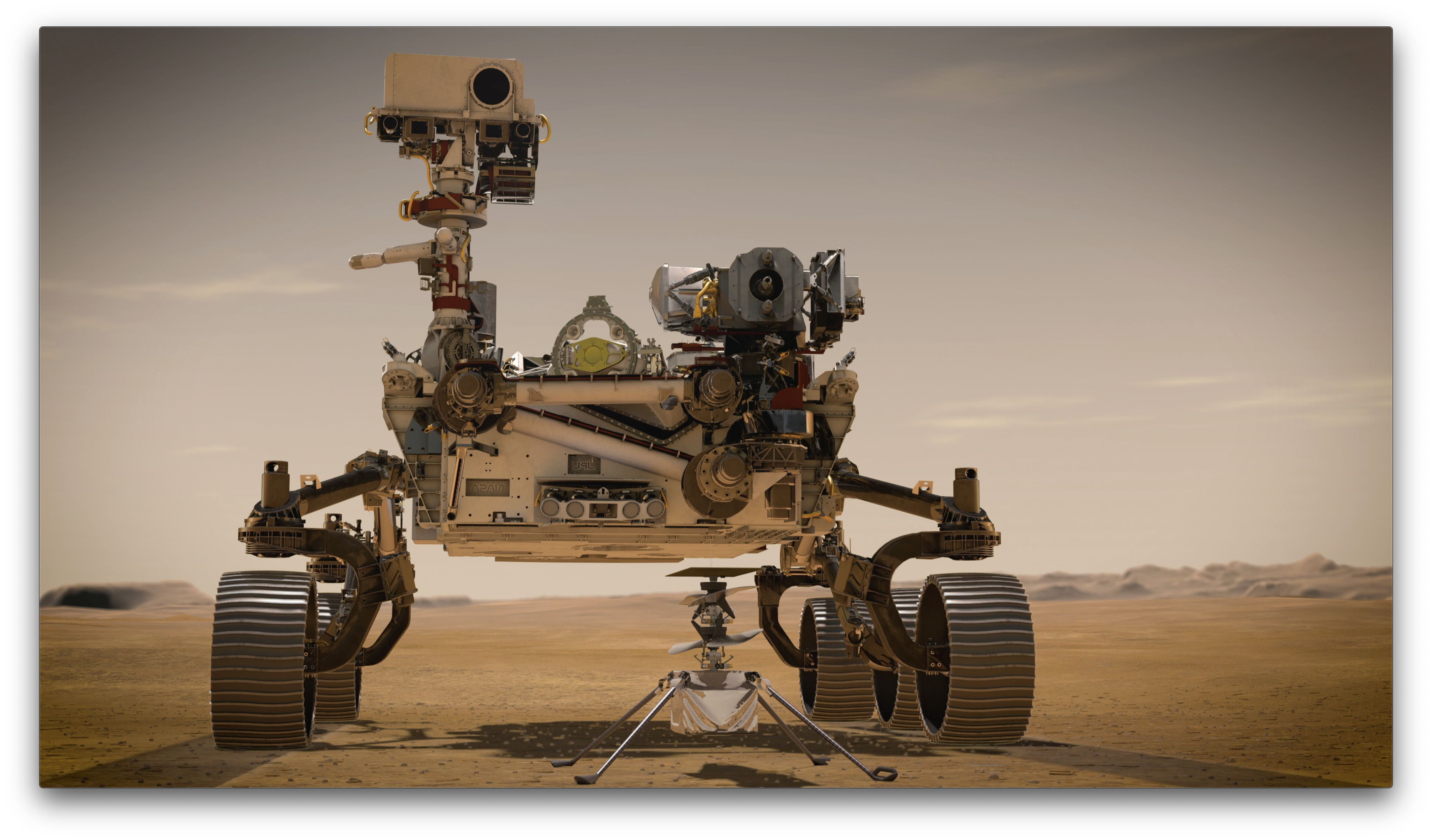NASA’s new Mars rover is bristling with tech made to find signs of alien life

Deep down, our drive to explore Mars has always been about figuring out the story of life in our solar system. Are we alone? Were we always? Or is life on Earth descended from Martian progenitors? NASA is now on the verge of launching its most ambitious effort ever to chip away at those questions, in the form of a high-tech rover called Perseverance and a scheme to return some of the samples it finds back home.
Perseverance launched successfully at 7.50am EST today from Cape Canaveral Air Force Station in Florida. By February it will join a small fleet of Martian landers and rovers whose close-up study of Mars’s surface has, in many ways, led to this moment. Each of the other three rovers NASA has launched in the 21st century have been concerned with investigating the potential for the Red Planet to harbor ancient or current biology. But those missions were focused on questions around that issue—exploring the history of water on Mars, and probing for the building blocks that could have developed into life. Perseverance tackles the question head on, looking for life in an area that is thought to have once been one of the most habitable parts of ancient Mars.
Down in the ancient delta
Once Perseverance lands on Mars, it will head for the 28-mile long Jezero crater, a former lakebed that’s 3.8 billion years old. A river used to flow into the crater, and it’s at Jezero’s river delta where sediments that could have been carrying organic compounds and minerals associated with life are most likely to have been preserved within the rock.
Two instruments mounted on the rover’s robotic arm will do most of the extraterrestrial detective work. Both are spectrometers: PIXL, which analyzes x-rays; and Sherloc, which looks at ultraviolet light. They’ll be used to determine the chemical composition of interesting samples, with researchers hoping they may spot complex molecules like amino acids or fatty acids that could indicate the presence of life. On Sherloc, that analysis can be mapped onto images of a sample taken by the Watson camera, down to a spatial resolution of 100 microns (about the width of human hair). Scientists can use those images to look for patterns or formations suggestive of life.
Even with its suite of state-of-the-art instruments, researchers won’t know until Perseverance tries whether it will be able to identify conclusive signs of life. But it doesn’t have to. The new mission will also collect up to 43 samples of interest to be shipped back to Earth later in the decade, in the first-ever sample return mission from another planet. On Earth, scientists will use laboratory analysis to unearth Mars’s ancient secrets in ways we’ve rarely dreamed.
Taking the new tech for a spin
There’s a lot more riding on Perseverance—literally. The mission is fitted with 23 cameras that will provide the first footage of a Martian lander entering the atmosphere and landing. Microphones will capture audio of the landing, too, along with the sounds of Perseverance trekking across the surface and drilling into the ground. Besides the spectrometers, the rover will also use ground-penetrating radar to map the red planet’s subsurface geology, and carry out weather observations.
The mission will test out several different new technologies that could augment future exploration on Mars and elsewhere as well. An experiment called Moxie will attempt to use atmospheric carbon dioxide to create pure oxygen, a crucial ingredient in supporting human life on future Mars missions.
Then there’s the helicopter. Called Ingenuity, the lightweight robotic chopper won’t do a great deal of science, but it could scout for targets that Perseverance can investigate further. If it can successfully cruise through Mars’s thin atmosphere, it will be an important step toward using more flying drones to explore other worlds (as with the Dragonfly mission to Titan, launching in 2026).
The communications delay caused by the distance between Mars and Earth means automation has been built into Mars rovers since the beginning, and Perseverance will set a new standard for autonomy. The Jezero area is riddled with rocky hazards and rough terrain, so the Perseverance team built a system that will allow the rover to automatically adjust its landing on the fly in order to avoid danger. Upon landing, it will be driving around autonomously, making decisions on its own about whether to power through or avoid obstacles, and generating its own internal map of the landscape as it rolls through.
Crowded planet
NASA is far from the only space agency taking advantage of Earth’s closest orbital pass with Mars, which is coming up in October and occurs only once every 26 months. The UAE launched its Hope orbiter a few weeks ago to study the planet’s lower atmosphere and weather in depth. China fired off its own rover to Mars last week as part of its Tianwen-1 mission, to map the ice distribution on Mars and study the history of habitability on the planet.
Updated: This story was updated to say the launch was successful.
Deep Dive
Space
How to safely watch and photograph the total solar eclipse
The solar eclipse this Monday, April 8, will be visible to millions. Here’s how to make the most of your experience.
How scientists are using quantum squeezing to push the limits of their sensors
Fuzziness may rule the quantum realm, but it can be manipulated to our advantage.
The great commercial takeover of low Earth orbit
Axiom Space and other companies are betting they can build private structures to replace the International Space Station.
Stay connected
Get the latest updates from
MIT Technology Review
Discover special offers, top stories, upcoming events, and more.